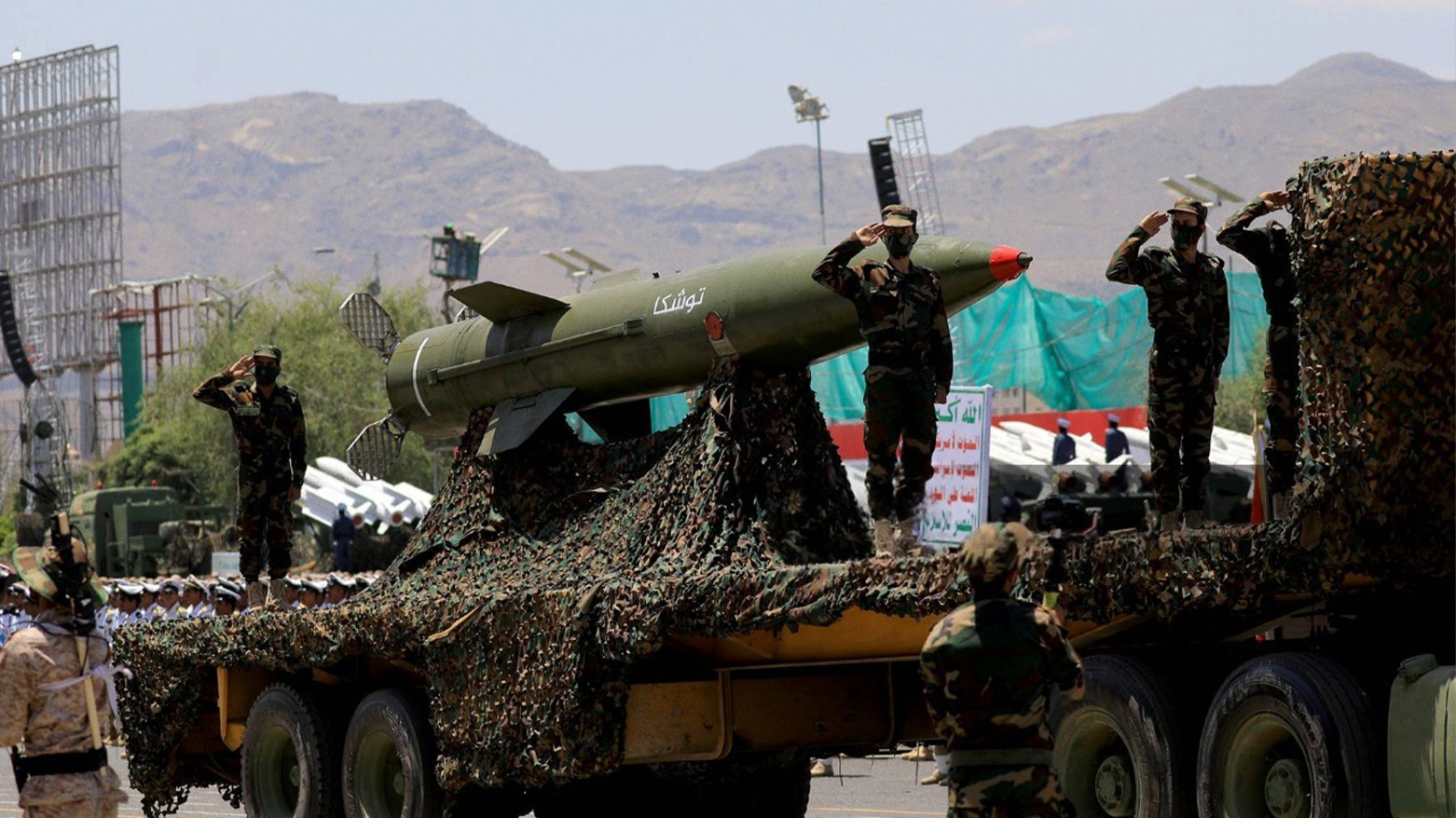Yemen Warns: Iran Turning Houthi Areas into Missile Launchpads
Yemen’s government warns Iran is turning Houthi-held areas into missile launchpads and military hubs. Minister al-Eryani cites IRGC-led drone strikes and efforts to relocate weapons production to Yemen. He calls for global action to prevent further destabilization.

By Kamaran Aziz
ERBIL (Kurdistan 24) — Yemen's internationally recognized government issued a stark warning this week, accusing Iran of transforming Houthi-controlled areas into a regional launchpad for missile and drone operations. The warning, articulated by Minister of Information Moammar al-Eryani on his official X account and echoed by Asharq al-Awsat and Sky News Arabia, raises urgent alarms about Tehran’s military-industrial activities in Yemen and the strategic risks to regional and global security.
In a series of detailed statements on X, al-Eryani declared that the recent missile strikes attributed to Iran reveal a broader military infrastructure involving Yemen-based operations directed by the Islamic Revolutionary Guard Corps (IRGC).
"The recent missile strikes by the Tehran regime revealed dimensions that go beyond bilateral engagement... exposing the false claims by the terrorist Houthi militia, for years, regarding its possession of 'military manufacturing' capabilities," al-Eryani wrote.
He emphasized that the advanced weaponry deployed during the ongoing "12-Day War"—including ballistic and hypersonic missiles, as well as suicide drones—demonstrates direct IRGC involvement.
"The same types, ranges, operational techniques, and field tactics used by the Houthis in their attacks on neighboring countries and on international shipping lines in the Red Sea, Bab al-Mandab, and the Gulf of Aden, since late 2023," he noted.
Al-Eryani further claimed that the IRGC’s operational doctrine—such as missile salvos, varying trajectories, and low-altitude drones to evade radar—was mirrored precisely in Houthi operations, "…which reflects a similarity in operational doctrine and confirms what international reports have documented about the presence of experts from Iranian Revolutionary Guard inside Yemen and their complete guidance of operations, including attacks on international shipping lines," he added.
● The recent missile strikes by Tehran regime revealed dimensions that go beyond the context of bilateral engagement and limited response, unequivocally exposing the false claims by the terrorist Houthi militia, for years, regarding its possession of “military manufacturing”…
— معمر الإرياني (@ERYANIM) June 26, 2025
According to Asharq al-Awsat, the minister also warned of Iran’s attempts to relocate its military-industrial capacity into northern Yemen, particularly in Saada, Hajjah, and the outskirts of Sanaa.
"We warn against the Iran attempts to localize parts of its military industries program, and in particular the manufacture and development of missiles and drones, in Houthi-controlled areas, specifically Sa’da, Hajjah, and Sana’a outskirts," al-Eryani stressed.
He also stated, “International complacency in the face of these measures will cost the region and the world dearly, and give Iran the opportunity to consolidate a dangerous reality by turning Yemen into a workshop for developing its prohibited programs, an advanced missile base for the Iranian Revolutionary Guard, and a platform for launching threats against regional security.”
Sky News Arabia corroborated these claims, reporting that Iranian-backed missile operations continue despite a dramatic budgetary collapse within the Houthi ranks. According to journalist Fawaz Munassar, the Houthis’ general budget has halved in recent months due to intensified U.S. sanctions, Israeli strikes on economic infrastructure, and diminishing internal revenue sources.
“The group is in a state of economic suffocation,” Munassar explained. “Even black-market revenues and port taxes have dwindled, and financial institutions are fleeing from Sanaa to Aden.”
Despite this, the Houthis’ missile and drone divisions remain active, allegedly funded directly by Tehran.
“This elite force has its own separate budget line provided by Iran,” said Munassar, adding that operational and technical support is managed by Quds Force experts.
Al-Eryani used these revelations to dismantle the Houthis’ longstanding claims of indigenous weapons development.
“Data confirms that Houthi militia does not possess any ‘military manufacturing’ abilities, other than media statements,” he said. “Strategic military decision of the Houthis is completely subject to the leadership of Tehran."
The implications, according to al-Eryani, are not merely local or regional.
"The continued Iranian entrenchment in Yemen jeopardizes global maritime trade, energy security, and regional stability," he wrote. "International leniency in addressing this threat will come at a heavy price."
As pressure mounts on Iran’s nuclear and missile programs, both Asharq al-Awsat and Sky News Arabia reported that Tehran is doubling down on proxies like the Houthis to maintain regional leverage. The Houthis, in turn, have reportedly submitted a direct request to Iran's ambassador in Sanaa for emergency financial and military aid, hoping to avert a collapse in their domestic operations.
“Tehran now faces a critical decision,” said Munassar. “Continue to bankroll the Houthis as a strategic deterrent—or scale back amidst growing international scrutiny.”
Al-Eryani concluded by stating that the regional security calculus is undergoing a major realignment.
“What is happening today is not just a setback to Iran’s nuclear ambitions and its expansionist project in the region,” he said. It is a “reshaping of the security equations in the region, and an exposed Iranian repositioning through its proxies, at the heart of which is ‘Houthi militia’.”
The coming weeks, according to multiple sources, may define the future of the Houthi-Iran alliance and its broader implications for Middle Eastern stability and global trade corridors.
